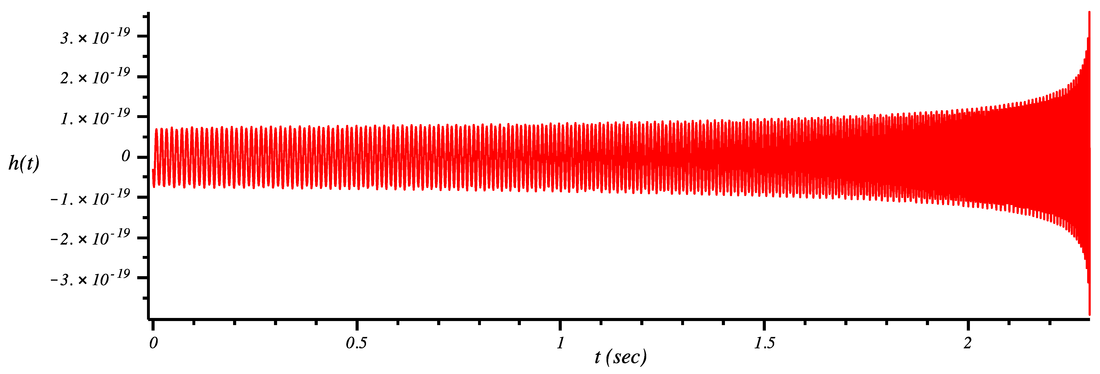Initial LIGO data
Here you see a plot of 256 seconds of strain data from the Livingston detector taken during a time coincident with a gamma ray burst (GRB051103). No actual gravitational-wave signals were found. This indicated that if the GRB was located in the M81 galaxy (whose position it overlapped with), then that particular GRB could not be a merging pair of neutron stars.
The data shown here were taken from the LIGO website associated with GRB 051103. (See also the science summary associated with this study.)
This data is a bit long for a sound. In the two plots below I zoom in on two sections of this plot, t=80s to 100s and t=160s to 180s, and include the associated sounds.
This data is a bit long for a sound. In the two plots below I zoom in on two sections of this plot, t=80s to 100s and t=160s to 180s, and include the associated sounds.
Data with fake signal
Here we've taken the above data and injected a fake signal corresponding to the inspiral of two black holes with 1 and 4 solar masses. Can you see where the signal was injected? Play the audio and see if you can figure out where the signal was injected.
Could you hear the very brief end of the "chirp" sound near 14 sec in the audio? It's very difficult to hear. In the plot above this corresponds to the small extra blip in the plot near t=175.5 sec (compare the two plots above). Try listening to the two sounds above near time index 14s - 16s to hear the small difference.
Without the detector noise, the signal that was added looks and sounds like this:
Without the detector noise, the signal that was added looks and sounds like this:





